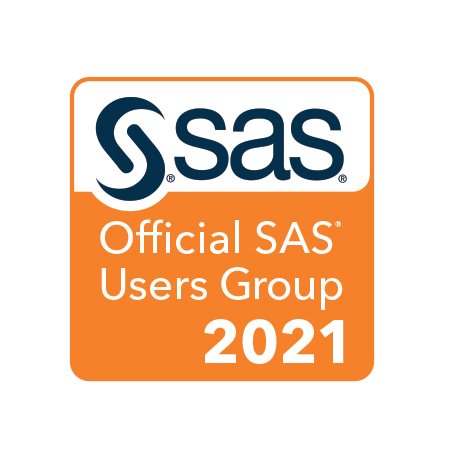We’re excited to bring back Hand On Workshops to the 2018 South Central SAS Users Group Educational Forum. These Workshops are included at no additional cost with your registration for the Educational Forum.
We have scheduled several HOW topics on Monday, November 5th and Tuesday, November 6th, 2018 so registered attendees can “learn by doing”. What do you need to take advantage of these scheduled HOWs? Plan to bring your laptops, power cords, and a thirst for learning, along with a licensed version of Base-SAS software installed on your laptop. If you don’t have a licensed version of Base-SAS software, no worries! You can bring your laptop and power cord with the “free” SAS University Edition and virtualization software pre-installed.
SAS University Edition Download & Installation Instructions
Don’t have the licensed version of Base-SAS installed on your laptop? No problem! Click the following hyperlink to walk you through the complete SAS University Edition software download & installation instructions.
https://www.sas.com/en_us/software/university-edition/download-software.html
Oracle VirtualBox Download, Installation and Configuration Instructions
Do you want to view a simple step-by-step QuickStart Guide for Oracle VirtualBox? No problem! Click the following hyperlink to access the QuickStart Guide.
Here’s a list of each 50-minute HOW topic and the instructors teaching them . . .
| Gina Curbo | How to Work with SAS Arrays | Array usage simplifies the coding needed and can be a much better way to document the handling of complicated data types. Their complexity can overwhelm many and often leads to avoiding this useful tool. Join us as we review arrays and demystify their use for maximizing processing and simplifying workflow. This session will start from the beginning and lead you through exercises to master your knowledge of creating, building, and reading single and multi-dimensional arrays. |
| Charu Shankar | Onwards & Upwards with 5 Top PROC SQL Tips | PROC SQL is a powerful language that can express many of your queries simply and with clarity. Users who are continuously improving process and looking to stay within PROC SQL to analyze and process data will benefit from this HOW. Learn how to join tables dynamically; create In-line views for joins; pivot like a dancer with the Boolean; recognize patterns in your data; and create running totals. |
| Richann Watson | Animate your Data! | When reporting your safety data, do you ever feel sorry for the person who has to read all the laboratory listings and summaries? Or have you ever wondered if there is a better way to visualize safety data? Let’s use animation to help the reviewer and to reveal patterns in your safety data, or in any data! This hands-on workshop demonstrates how you can use animation in SAS® 9.4 to report your safety data, using techniques such as visualizing a patient’s laboratory results, vital sign results, and electrocardiogram results and seeing how safety results change over time. In addition, you will learn how to animate adverse events over time, and how to show the relationships between adverse events and laboratory results using animation. |
| Josh Horstman | Getting Started with the SGPLOT Procedure | Do you want to create highly-customizable, publication-ready graphics in just minutes using SAS? This hands-on workshop will introduce the SGPLOT procedure, which is part of the ODS Statistical Graphics package included in Base SAS. Starting with the basic building blocks, you’ll be constructing basic plots and charts in no time. We’ll work through several different plot types and learn some simple ways to customize each one. |
| John Schmitz | Using Multilabel Formats with PROC SUMMARY to Generate Report Data with Overlapping Time Segments | SAS introduced the multi-label format (MLF) in Version 8. Yet, few users are familiar with the MLF or its unique capabilities. MLFs are used for data summarization where the same observation may be classified into 2 or more levels, simultaneously. In this hands-on workshop, MLFs will be used to generate time segments with overlapping periods. The focus will include creating the multi-label format definition, applying MLFs to CLASS variables within PROC SUMMARY, and properly understanding the results. |
| Louise Hadden | Document and Enhance Your SAS® Code, Data Sets, and Catalogs with SAS Functions, Macros, and SAS Metadata | Discover how to document your SAS® programs, data sets, and catalogs with a few lines of code that include SAS functions, macro code, and SAS metadata. Do you start every project with the best of intentions to document all of your work, and then fall short of that aspiration when deadlines loom? Learn how SAS system macro variables can provide valuable information embedded in your programs, logs, lists, catalogs, data sets and ODS output; how your programs can automatically update a processing log; and how to generate two different types of codebooks. |
| Kirk Paul Lafler | A Hands-on Introduction to SAS® DATA Step Hash Programming Techniques | SAS software supports a DATA step programming technique known as hash that enables faster table lookup, search, merge/join, sort and transpose operations. This hands-on workshop reviews match-merge and join techniques, introduces what a hash object is, how hash objects work, and the hash object syntax required to take advantage of the speed that available memory offers in performing complex tasks. Attendees learn essential hash object programming techniques to define a simple key, sort data, search memory-resident data using a simple key, match-merge (or join) two data sets, and resolve collision scenarios where two distinct pieces of data have the same hash value. |



